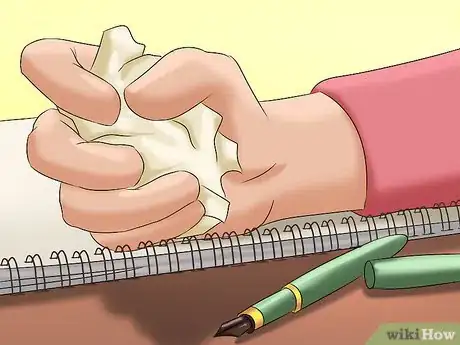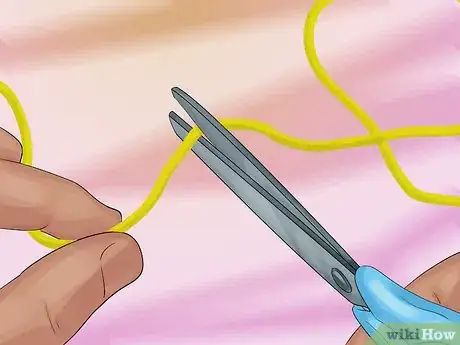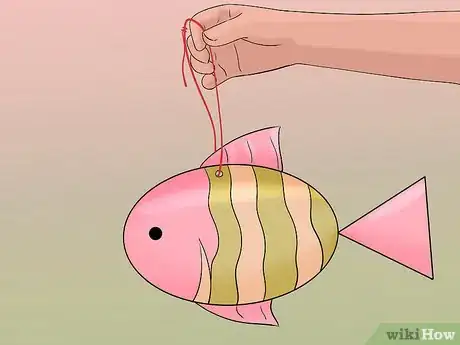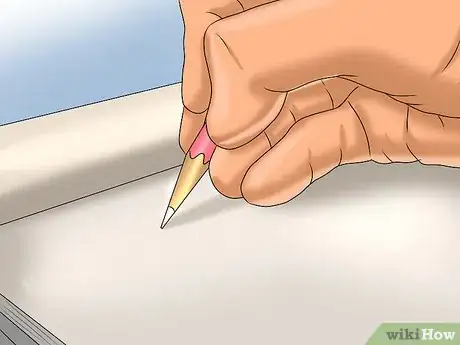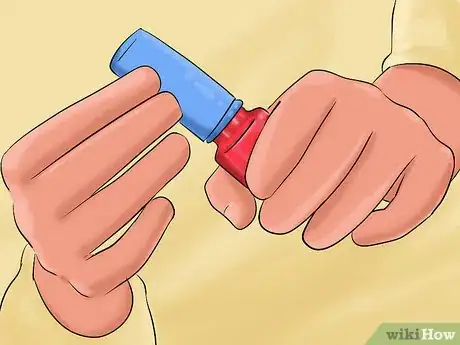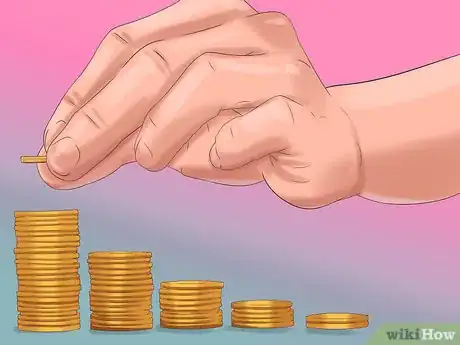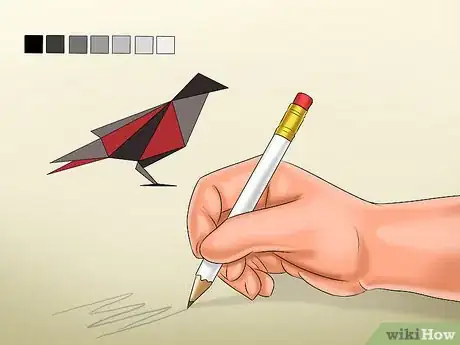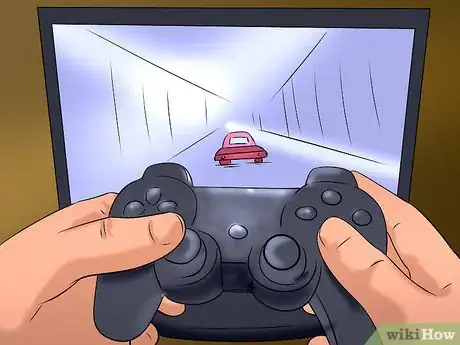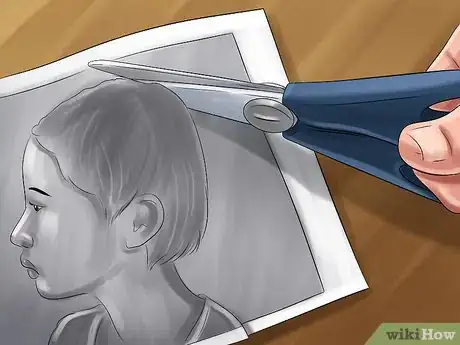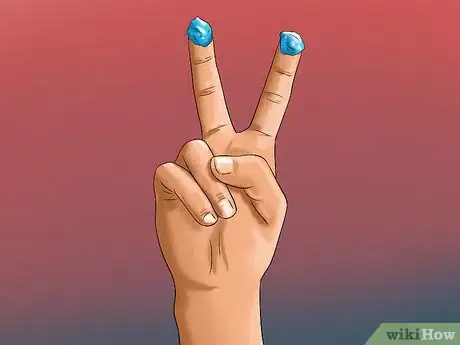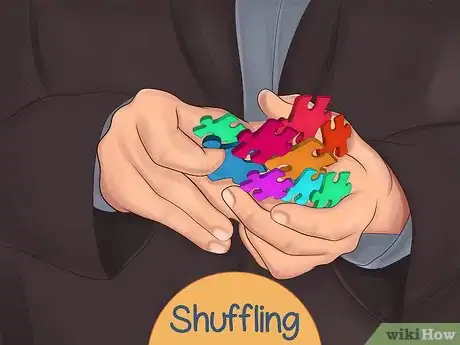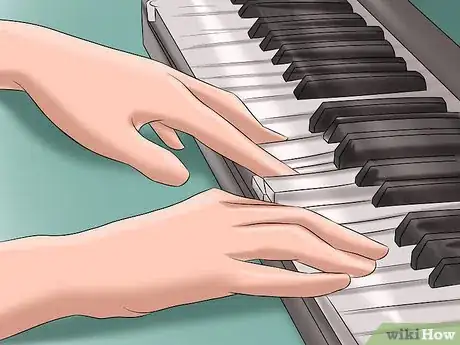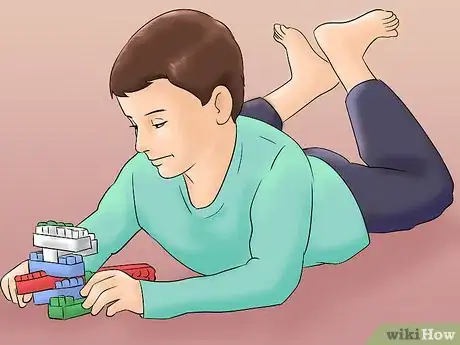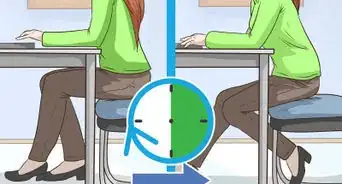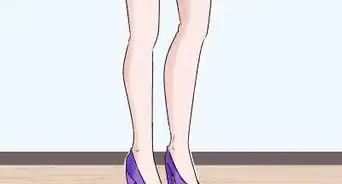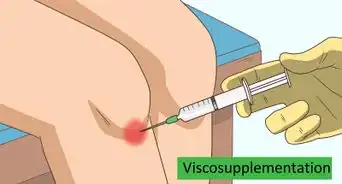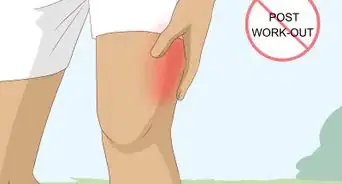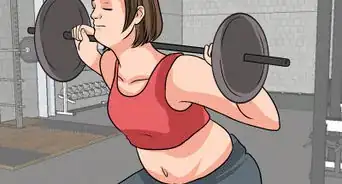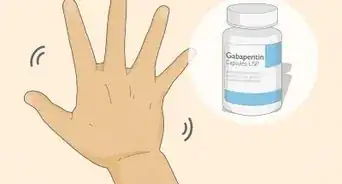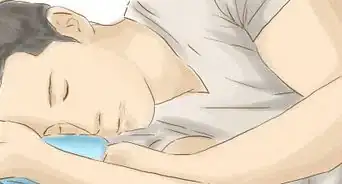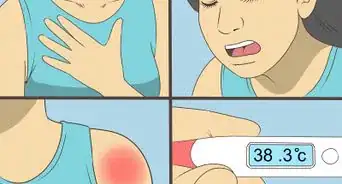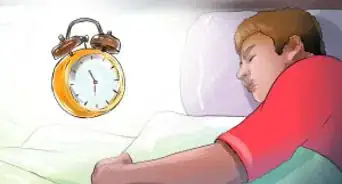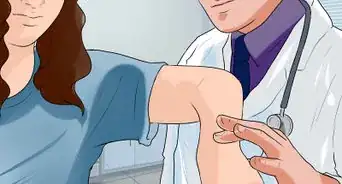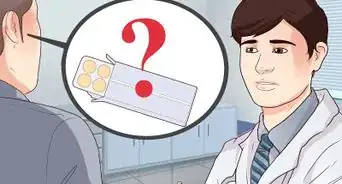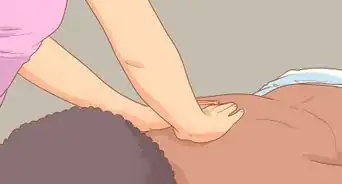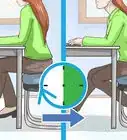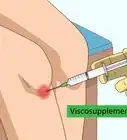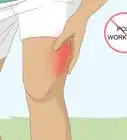This article was co-authored by Joel Warsh, MD. Dr. Joel Warsh is a board certified Pediatrician and the Owner & Founder of Integrative Pediatrics and Medicine in Los Angeles, California. With over a decade of experience, Dr. Warsh specializes in holistic and integrative medicine. He holds a Bachelor’s degree in Kinesiology and Health Sciences, a Master’s degree in Epidemiology and Community Health, and a Doctor of Medicine (MD) from Thomas Jefferson Medical College, where he was elected president of the Jefferson Pediatric Society. Dr. Warsh then completed his Pediatric Residency at Children’s Hospital of Los Angeles (CHLA), where he received the George Donnell Society Research Fellow.
There are 13 references cited in this article, which can be found at the bottom of the page.
This article has been viewed 199,683 times.
A fine motor skill involves the coordination of the small muscles in your hands with your eyes. Mastery of fine motor skills gives both children and adults a greater range of independence with their daily activities. Activities that strengthen both hand muscles and hand-eye coordination can help improve fine motor skills while also being fun.
Steps
Strengthening Hand Muscles
-
1Squeeze play-dough or clay. Working with play-dough or clay provides an opportunity to strengthen finger muscles by squeezing and stretching the material into different shapes.
- Roll out the dough or clay and then pound it down. Use other tools to shape the clay, such as popsicle sticks.[1]
- Don't have any play-dough at home? No problem. You can easily make your own by mixing together 1 cup (240 mL) of water, 1 cup (128 g) of flour, ½ cup (136 g) of salt, 1 tablespoon (15 mL) of vegetable oil, and 1 tablespoon of cream of tartar over medium heat until it comes together. Color it with food coloring if you like![2]
- You could also make a bread dough that needs kneading and have something yummy to eat after your exercise!
-
2Pick things up with a clothespin. Working with a clothespin will improve hand dexterity by strengthening your grasp. Pick up pompoms and move them with a clothespin from one pile to another.[3]
- Use clothespins to hang things up on a clothesline.
- If clothespins are too difficult to squeeze, try using tweezers first. They'll require more concentration but are easier to squeeze.
- You could also use kitchen tongs to pick up larger pompom balls for more of a challenge.[4]
Advertisement -
3
-
4Ball up a piece of paper with one hand. Using only one hand the entire time, crumple up a piece of paper into a ball and then smooth it back out again. This works on developing hand strength.[7]
Improving Hand-Eye Coordination
-
1Use scissors to cut. Working with scissors to cut paper is a great exercise for building hand-eye coordination.
- Start with cutting paper without any patterns and then draw lines for you to follow. Start with straight lines before progressing to waves and zigzags.
- If this is too difficult, you can begin by cutting straws, which are more easily cut.[8]
- Have a small child cut out shapes or have an adult cut out coupons.[9]
-
2Thread objects onto a string. Get some string and begin threading objects onto it. You can thread a range of items, such as straws, beads, macaroni, or Cheerios.[10]
-
3Draw. Practicing drawing shapes, such as a circle, is a good way to improve both hand muscles and hand-eye coordination.[13]
- Use broken crayons or mini-golf pencils to work on improving your muscles for gripping.
-
4Open and close jars. Practice hand-eye coordination by unscrewing jar tops. Then screw them back into place. You can use whatever you have laying around in your pantry or bathroom.
-
5Sort coins into piles. Sort out a pile of coins by placing them into piles stacked on top of each other. Balancing the coins on top of each other requires careful hand-eye coordination. See how high you can stack them![14]
Getting Creative with Activities
-
1Make origami. Making paper origami animals requires folding paper intricately, which works on both wrist strength and hand-eye coordination.[15]
- Start off with an easy paper folding activity, such as making a fan, and then work up to something a little bit harder, such as a frog or penguin.
- Fold cloth napkins to prepare for a fancy dinner party.
-
2Play video games. Video games are a great way to improve fine motor skills since they involve movement coordination and finger dexterity.[16]
- Any video game controllers that utilize joysticks to control the game are good for developing fine motor skills.
- Shooter games, such as Call of Duty, that require the player to coordinate their position and direction in space while aiming are helpful in developing fine motor skills.[17]
- Don't forget about mobile games! Dot Collector and Tremble Drop are 2 games that will help improve your dexterity.
-
3
-
4Paint with your fingers. Finger painting increases hand dexterity and encourages hand-eye coordination. Pull out the finger paints and practice drawing fun shapes or pictures onto the paper.
-
5Put together a puzzle. Working with small pieces of a puzzle and placing them together will help with both strengthening hand muscles and hand-eye coordination.
- Start with a puzzle with larger pieces and work up to puzzles with smaller pieces.
-
6
-
7Construct with building blocks. Build up a castle or tower with Lego (or similar) blocks to practice fine motor skills. You can begin with larger Lego blocks, such as Duplo, and graduate to smaller ones when you need the challenge.[20]
Expert Q&A
-
QuestionHow do you help children develop specific motor skills if they aren't trying on their own?
 Joel Warsh, MDDr. Joel Warsh is a board certified Pediatrician and the Owner & Founder of Integrative Pediatrics and Medicine in Los Angeles, California. With over a decade of experience, Dr. Warsh specializes in holistic and integrative medicine. He holds a Bachelor’s degree in Kinesiology and Health Sciences, a Master’s degree in Epidemiology and Community Health, and a Doctor of Medicine (MD) from Thomas Jefferson Medical College, where he was elected president of the Jefferson Pediatric Society. Dr. Warsh then completed his Pediatric Residency at Children’s Hospital of Los Angeles (CHLA), where he received the George Donnell Society Research Fellow.
Joel Warsh, MDDr. Joel Warsh is a board certified Pediatrician and the Owner & Founder of Integrative Pediatrics and Medicine in Los Angeles, California. With over a decade of experience, Dr. Warsh specializes in holistic and integrative medicine. He holds a Bachelor’s degree in Kinesiology and Health Sciences, a Master’s degree in Epidemiology and Community Health, and a Doctor of Medicine (MD) from Thomas Jefferson Medical College, where he was elected president of the Jefferson Pediatric Society. Dr. Warsh then completed his Pediatric Residency at Children’s Hospital of Los Angeles (CHLA), where he received the George Donnell Society Research Fellow.
Board Certified Pediatrician Children are rarely going to try to develop brand new skills on their own without any kind of assistance. There's this concept called scaffolding, where you support a child to approach a new skill by demonstrating it and providing backstops for them. For example, if you're teaching a child how to sit, you might put pillows on either side of them so that they can't hurt themselves if they fall to the side, and then you prop them up while sitting next to them.
Children are rarely going to try to develop brand new skills on their own without any kind of assistance. There's this concept called scaffolding, where you support a child to approach a new skill by demonstrating it and providing backstops for them. For example, if you're teaching a child how to sit, you might put pillows on either side of them so that they can't hurt themselves if they fall to the side, and then you prop them up while sitting next to them. -
QuestionWhy isn't my child learning new skills?
 Joel Warsh, MDDr. Joel Warsh is a board certified Pediatrician and the Owner & Founder of Integrative Pediatrics and Medicine in Los Angeles, California. With over a decade of experience, Dr. Warsh specializes in holistic and integrative medicine. He holds a Bachelor’s degree in Kinesiology and Health Sciences, a Master’s degree in Epidemiology and Community Health, and a Doctor of Medicine (MD) from Thomas Jefferson Medical College, where he was elected president of the Jefferson Pediatric Society. Dr. Warsh then completed his Pediatric Residency at Children’s Hospital of Los Angeles (CHLA), where he received the George Donnell Society Research Fellow.
Joel Warsh, MDDr. Joel Warsh is a board certified Pediatrician and the Owner & Founder of Integrative Pediatrics and Medicine in Los Angeles, California. With over a decade of experience, Dr. Warsh specializes in holistic and integrative medicine. He holds a Bachelor’s degree in Kinesiology and Health Sciences, a Master’s degree in Epidemiology and Community Health, and a Doctor of Medicine (MD) from Thomas Jefferson Medical College, where he was elected president of the Jefferson Pediatric Society. Dr. Warsh then completed his Pediatric Residency at Children’s Hospital of Los Angeles (CHLA), where he received the George Donnell Society Research Fellow.
Board Certified Pediatrician Consistency is extremely important when it comes to motor skills. You have to encourage them along the way and practice regularly to get them to stick. It can take a lot of time, so don't get frustrated!
Consistency is extremely important when it comes to motor skills. You have to encourage them along the way and practice regularly to get them to stick. It can take a lot of time, so don't get frustrated! -
QuestionHow does fine motor skill help to develop writing skills? What exercises do we need to follow?
 Catherine Palomino, MSCatherine Palomino is a former Childcare Center Director in New York. She received her MS in Elementary Education from CUNY Brooklyn College in 2010.
Catherine Palomino, MSCatherine Palomino is a former Childcare Center Director in New York. She received her MS in Elementary Education from CUNY Brooklyn College in 2010.
Master's Degree, Elementary Education, CUNY Brooklyn College Developing a strong fine motor skill will help writing skills because one would need the correct motor functions to be able to make the fine movements in the fingers and hands necessary for writing.
Developing a strong fine motor skill will help writing skills because one would need the correct motor functions to be able to make the fine movements in the fingers and hands necessary for writing.
References
- ↑ https://families.naeyc.org/learning-and-development/child-development/help-your-child-build-fine-motor-skills
- ↑ https://www.familyeducation.com/fun/playdough/play-doh-recipes
- ↑ https://www.cerebralpalsyguide.com/treatment/occupational-therapy/
- ↑ http://handsonaswegrow.com/objects-fine-motor-skills/
- ↑ https://www.flintrehab.com/2015/how-to-improve-fine-motor-skills-in-hands/
- ↑ http://handsonaswegrow.com/objects-fine-motor-skills/
- ↑ https://www.seniorsflourish.com/finemotor/
- ↑ http://handsonaswegrow.com/objects-fine-motor-skills/
- ↑ https://www.seniorsflourish.com/finemotor/
- ↑ https://www.cerebralpalsyguide.com/treatment/occupational-therapy/
- ↑ http://handsonaswegrow.com/objects-fine-motor-skills/
- ↑ https://www.seniorsflourish.com/finemotor/
- ↑ http://www.parents.com/toddlers-preschoolers/development/physical/child-developing-motor-skills/
- ↑ http://handsonaswegrow.com/objects-fine-motor-skills/
- ↑ https://www.brainbalancecenters.com/blog/2014/04/improve-visual-motor-skills-kids/
- ↑ https://www.ncbi.nlm.nih.gov/pubmed/22826085
- ↑ https://my.vanderbilt.edu/developmentalpsychologyblog/2014/04/effect-of-video-games-on-child-development/
- ↑ http://www.parentgiving.com/elder-care/activities-for-the-elderly/
- ↑ https://www.ncbi.nlm.nih.gov/pubmed/16597773
- ↑ https://childdevelopment.com.au/areas-of-concern/fine-motor-skills/
About This Article
To work on your fine motor skills, play video games, which are great for improving your finger dexterity and hand-eye coordination. If you enjoy being artistic, try making a scrapbook or finger painting, since both activities test your fine motor skills. You can also try squeezing play-dough or clay into different shapes, which will strengthen your finger muscles. Alternatively, have a go at origami, since making a fan or animal by folding paper will challenge your coordination and accuracy. For a simpler option, stretch 2 or 3 rubber bands between your thumb and pointer finger to build your hand muscles. For tips on how to improve your motor skills with puzzles or music, read on!
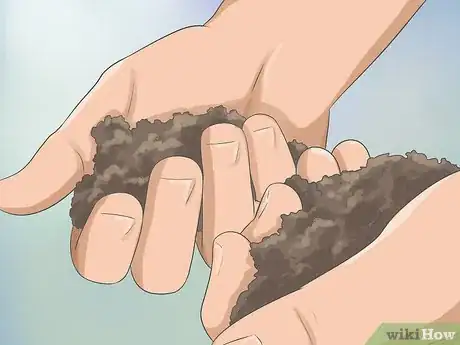
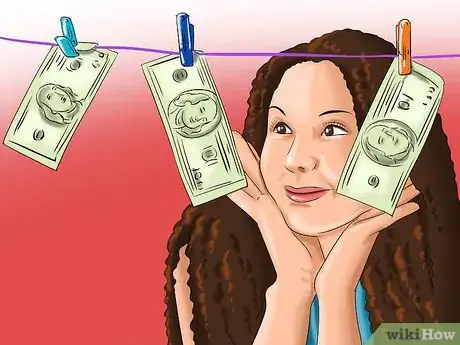
-Step-4.webp)
